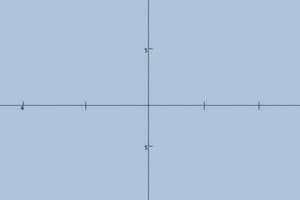Podcast
Questions and Answers
Знайти координати відрізка AB, якщо A (1,2,3) і B (-3, -2, -1)в тривимірному просторі?
Знайти координати відрізка AB, якщо A (1,2,3) і B (-3, -2, -1)в тривимірному просторі?
- (-4, -4, -4) (correct)
- (4, 4, 4)
- (-4, 4, 0)
- (4, 0, 2)
Яким чином обчислюється сума векторів а (-1, 3, -2) і в (2, -4, 6) в тривимірному просторі?
Яким чином обчислюється сума векторів а (-1, 3, -2) і в (2, -4, 6) в тривимірному просторі?
- (1,-1, 4) (correct)
- (-1, -1, -4)
- (1, 1, 4)
- (-1, 1, -4)
Як називається операція, коли з одного вектора видаляють вплив іншого?
Як називається операція, коли з одного вектора видаляють вплив іншого?
- Bi - Ci = 4 - 3, Bj - Cj = 5 - 9, Bk - Ck = 0 - 1
- Ri = Ai - Bi, Rj = Aj - Bj, Rk = Ak - Bk (correct)
- Це множення скалярно
- Ri = Ai + Bi, Rj = Aj + Bj, Rk = Ak + Bk
Що таке скалярне множення вектору?
Що таке скалярне множення вектору?
Як представити суму векторів CD та AB з компонентами {3, 4, 1} та {2, 5, 0} відповідно?
Як представити суму векторів CD та AB з компонентами {3, 4, 1} та {2, 5, 0} відповідно?
Які основні поняття розглядається в фізиці та математиці при розумінні координат і векторів?
Які основні поняття розглядається в фізиці та математиці при розумінні координат і векторів?
Що представляє собою система координат?
Що представляє собою система координат?
Як позначаються одиницеві вектори, що відповідають вісям у тривимірній координатній системі?
Як позначаються одиницеві вектори, що відповідають вісям у тривимірній координатній системі?
Що означає скалярне множення векторів?
Що означає скалярне множення векторів?
Як називається операція, що включає додавання та віднімання векторів?
Як називається операція, що включає додавання та віднімання векторів?
Flashcards are hidden until you start studying
Study Notes
Coordinates and Vectors: An Overview
In physics and mathematics, understanding the concepts of coordinates and vectors is crucial for representing and manipulating spatial data. These fundamental concepts allow us to represent positions and movements in various dimensions, enabling us to analyze and solve complex problems involving motion, forces, and transformations. Here, we discuss the basics of coordinate systems, 3D coordinates, vector addition, vector subtraction, scalar multiplication, and dot products.
Coordinate Systems
A coordinate system is a framework for describing locations and directions in space. It consists of a set of lines called axes, which intersect at a common point called the origin. Each axis is assigned a specific basis vector or unit vector, which represents the direction in which the axis points. Points in the space can be represented by pairs of coordinates, one for each dimension.
For example, in a simple rectangular coordinate system, the axes are labeled as the x-axis, y-axis, and z-axis. The unit vectors corresponding to these axes are denoted by i, j, and k, respectively. Points in the space, such as a vector's start point or endpoint, are represented by their coordinates along the x, y, and z axes.
Three-Dimensional Coordinates
Three-dimensional coordinates extend the concept of two-dimensional coordinates to include a third dimension, often referred to as the depth or z-axis. Just like in two-dimensional coordinates, each coordinate corresponds to a specific axis. To specify a point in 3D space, one needs to provide its x, y, and z coordinates.
Consider a vector AB connecting two points A and B in 3D space. Vector AB can be represented by the differences between their coordinates on the x, y, and z axes. That is, the vector has components Ai - Bi, Aj - Bj, and Ak - Bk, where i, j, and k are the unit vectors along the respective axes.
Vector Addition and Subtraction
Vector addition involves combining two or more vectors to create a new vector that represents the total change in position or velocity. Similarly, vector subtraction describes the inverse operation, where we remove the effect of one vector on another.
Given two vectors A and B, their vector sum C is calculated by adding their individual components along each axis. That is:
Ci = Ai + Bi Cj = Aj + Bj Ck = Ak + Bk
On the other hand, to find the resultant vector R of the difference between two vectors A and B, we subtract the respective components:
Ri = Ai - Bi Rj = Aj - Bj Rk = Ak - Bk
For example, consider two vectors AB and CD with components {3, 4, 1} and {2, 5, 0}, respectively. Their vector sum ED would have components {5, 9, 1} (i.e., Ei = Ai + Bi = 3 + 2 = 5, Ec = Ai + Bi = 4 + 5 = 9, Ek = Ak + Bk = 1 + 0 = 1). Similarly, the vector difference BC would have components {-1, 1, -1} (i.e., Bi - Ci = 4 - 3 = 1, Bj - Cj = 5 - 9 = -4, Bk - Ck = 0 - 1 = -1).
Scalar Multiplication
Scalar multiplication refers to multiplying a vector by a scalar value (any real number). When a vector A is multiplied by a scalar k, all components of the vector are multiplied by k, resulting in a new vector kA:
ki = kAi kj = kAj kk = kAk
Scalar multiplication allows us to scale or magnify a vector, depending on our requirements. For example, if we want to double the size of a vector, we can multiply it by 2, effectively increasing its length without changing its direction.
Dot Product
The dot product, also known as the scalar product, is a measure of the similarity between two vectors. Given two vectors A and B, their dot product, denoted as A · B, is calculated as follows:
A · B = AiBi + AjBj + AkBk
The dot product of two vectors A and B returns a scalar value that represents the magnitude of the projection of A onto B. It provides important information about the relative orientations of the vectors. For example, if the dot product of two vectors is positive, they point in approximately the same direction. If it is negative, they point in opposite directions. If the dot product is zero, the vectors are orthogonal, meaning they are perpendicular to each other.
Studying That Suits You
Use AI to generate personalized quizzes and flashcards to suit your learning preferences.




